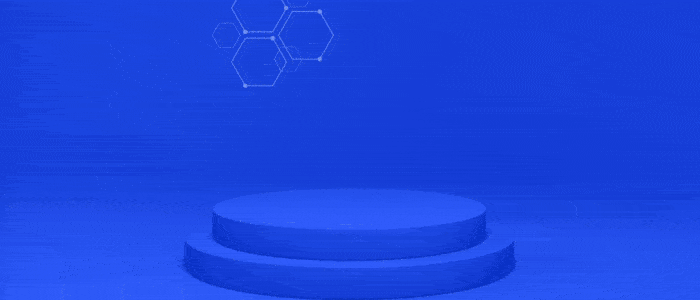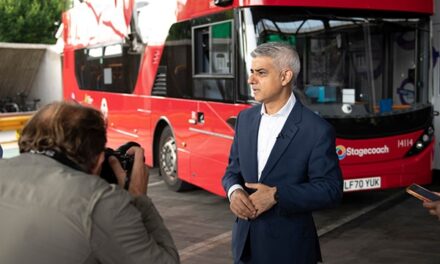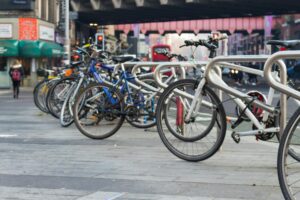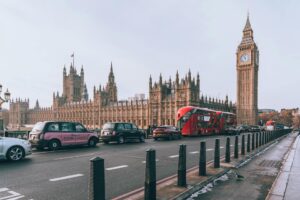Uber has announced a bold plan to electrify 50% of its rides in Europe by 2025, signalling a major shift towards a greener future. This ambitious strategy reflects the company’s commitment to reducing its carbon footprint and reshaping urban transport. With growing environmental concerns, Uber aims to collaborate with electric vehicle (EV) manufacturers and local governments to support the adoption of EVs. Offering financial incentives for drivers, expanding charging infrastructure, and creating partnerships with major manufacturers, Uber is positioning itself as a leader in sustainable transportation.
Leading the Charge Towards Sustainability
Uber’s focus on sustainability isn’t new, but this latest push represents its most significant environmental commitment yet. As part of its plan, the company is working closely with major EV manufacturers like Tesla, Renault, and BYD to help drivers make the switch to electric vehicles more affordable. Drivers will be able to take advantage of discounted rates and flexible leasing options, making the transition to electric vehicles a viable and attractive option.
The company’s CEO, Dara Khosrowshahi, stated that Uber has a responsibility to lead by example. “As a transportation leader, it is critical that we take bold steps in the fight against climate change. Electrifying our fleet is a major part of that effort,” Khosrowshahi said.
Uber aims to use its massive influence to encourage the adoption of electric vehicles across Europe. Currently, the company operates in over 40 cities throughout the continent, giving it the leverage to create a substantial impact on reducing emissions in urban areas.
Advertisement
Incentivising Drivers to Go Green
While transitioning to electric vehicles is a win for the environment, Uber recognises the challenges that its drivers face when making such a significant switch. Many drivers are concerned about the upfront costs of purchasing or leasing an electric vehicle, as well as the accessibility of charging stations. To address these concerns, Uber plans to roll out an incentive programme that will offer drivers financial support. This includes reduced leasing rates, government subsidies, and special deals through partnerships with automakers.
These incentives are designed to make EV adoption as smooth as possible for Uber drivers, many of whom operate on tight margins. By reducing the financial burden of acquiring an electric vehicle, Uber hopes to increase the number of EVs in its fleet while ensuring its drivers remain profitable.
Moreover, the company is working to make charging stations more accessible. With charging infrastructure still a challenge in many cities, Uber is in talks with local governments and private companies to expand the number of charging points, particularly in high-demand areas like airports, city centres, and residential districts. This infrastructure expansion is a key part of Uber’s strategy to make electric vehicle adoption more practical and convenient for its drivers.
Expanding Charging Infrastructure
One of the biggest hurdles to mass EV adoption is the availability of charging infrastructure. Without adequate charging stations, drivers can’t make the switch to electric vehicles without facing significant operational downtime. To overcome this, Uber is collaborating with local authorities and energy providers to establish more EV charging points in major cities.
Europe has already seen progress in this area, with countries like the UK, France, and Germany leading the charge in expanding charging networks. However, there’s still more to be done to meet the growing demand for electric vehicles. Uber is working to ensure that drivers have access to fast, reliable charging stations in key urban areas, with plans to build supercharging hubs where drivers can quickly recharge between rides.
By addressing the infrastructure challenge head-on, Uber aims to make electric vehicle use as seamless as possible for its drivers. In-app features that show nearby charging points, real-time availability, and estimated wait times will also be integrated into the platform, making it easier for drivers to plan their trips and minimise downtime.
Environmental and Financial Benefits
The environmental impact of Uber’s electric vehicle initiative is clear: fewer emissions mean cleaner air and quieter streets in urban areas. But the shift to electric vehicles also brings financial benefits for drivers and the company. Electric vehicles typically cost less to operate than traditional petrol or diesel cars, with lower maintenance costs and fuel savings. These operational savings can significantly increase drivers’ earnings over time.
For Uber, transitioning to electric vehicles is a long-term investment. Many European governments are increasing taxes and restrictions on petrol and diesel vehicles as part of their efforts to combat climate change. By adopting electric vehicles now, Uber can avoid these penalties and stay ahead of future regulations.
Advertisement
Uber’s commitment also puts pressure on the wider transportation industry to follow suit, positioning itself as a leader in the green mobility revolution. By setting a clear timeline and ambitious targets, Uber is demonstrating that going green is not just a possibility but a necessity.
Global Implications of Uber’s Electric Push
While Uber’s electric vehicle initiative is currently focused on Europe, it has the potential to influence the company’s operations worldwide. As other regions, including North America and Asia, look to combat rising emissions, Uber’s success in Europe could serve as a blueprint for global expansion. The company’s ability to collaborate with local governments, energy providers, and EV manufacturers will be critical as it seeks to replicate its European success in other major markets.
Europe has been a testing ground for Uber’s sustainability strategies, with cities like London and Paris already setting targets to phase out petrol and diesel vehicles. These cities are prime candidates for Uber’s electric vehicle rollout, given their progressive environmental policies and growing demand for green transportation.
If Uber can successfully achieve its 2025 goal in Europe, it will likely expand its electric vehicle initiative to other markets, including the United States, Canada, and parts of Asia. As more cities around the world commit to reducing their carbon footprints, Uber’s early investment in electric vehicles will position it as a leader in sustainable transport solutions globally.
Consumer Engagement and Awareness
In addition to driver incentives, Uber plans to encourage passengers to choose greener rides. The company will offer promotions for riders who select electric vehicles through the app, creating a sense of environmental responsibility among users. This consumer awareness campaign is designed to highlight the benefits of choosing an electric ride, not just in terms of lower emissions but also for the overall sustainability of cities.
As more riders become conscious of their carbon footprint, Uber expects demand for electric vehicle rides to grow. By promoting environmental consciousness among its users, Uber is helping to shift public perception and drive demand for cleaner transportation options.
The Road Ahead
Uber’s push to electrify its European fleet by 2025 is a major step toward a more sustainable future. By working with governments, manufacturers, and energy providers, the company is laying the groundwork for a cleaner, more efficient urban transport system. The plan not only addresses the immediate need to reduce emissions but also sets the stage for future innovations in electric mobility.
While challenges remain, particularly around infrastructure and driver adoption, Uber’s comprehensive approach to addressing these issues demonstrates its commitment to leading the charge towards a greener, more sustainable transportation model. If successful, Uber’s electric vehicle initiative will not only transform the company but could also serve as a catalyst for change across the entire transport sector.
Advertisement
As cities around the world continue to grapple with climate change and air pollution, Uber’s electric ambitions may be exactly what the future of urban mobility needs.














